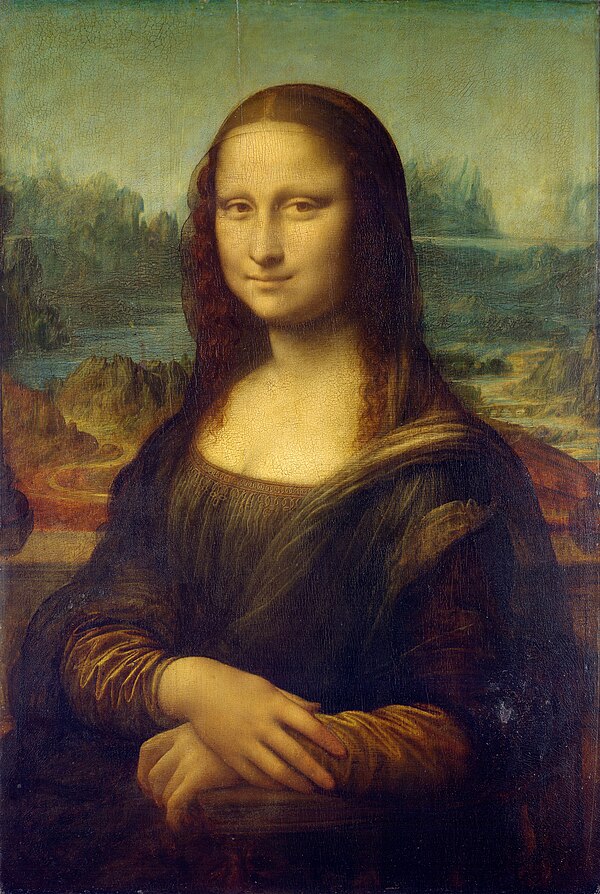Mona Lisa by Leonardo da Vinci (1503/07 – 1517)
This portrait is now probably the most famous portrait in the world. Painted by Leonardo da Vinci, he started painting this from around 1503 – 06 and is believed to have continued working on it until as late as 1517, close to his death. It is believed that the painting was commissioned by Francesco del Giocondo, for his 24 year old wife Lisa Gheradini (maiden name). It is said that Leonardo used clowns and acrobats to keep Lisa smiling whilst she patiently modelled for him, but the picture was never delivered to the client nor was it paid for. Leonardo was notorious for never completing his work and he continued to work on this picture that he carried around with him until his death in 1519 when it was purchased by his boss, King Francis I of France. It remained in the Royal collection until the revolution when it was exhibited to the public for the first time, 1797. It remained on display with little security until it was stolen in 1911. Up until this time the picture was only recognised as an important piece of work by other artists although it had influenced other artists since Leonardo first revealed it whilst he was still ‘improving it’. However, the resulting publicity from the theft elevated it into superstar status overnight; but it was another two years before the picture itself resurfaced, when an attempt was made to sell it to Giovani Poggi, director of the Uffizi Gallery, in Florence, by the thief Vincenzo Perrugia, who claimed that he stole it to return it to it’s rightful home, as he had mistakenly believed that Napoleon had stolen it from Italy. The picture was returned to Paris where it has continued to this day to be a huge draw for visitors to the Louvre and is now the main reason many people will visit the gallery.
The painting is small only 77cm x 53cm in size the face appears to be smiling but from a closer view the expression appears to change and the eyes appear to follow you around the room. How did Leonardo achieve such an engaging picture?
Leonardo was fascinated in both engineering and the sciences, he studied anatomy and spent many evenings watching and also taking part in the dissection of dead bodies the Hospital of Santa Maria Nuova, in Florence. From the understanding that he developed for the human body and facial muscles he was able to apply to his art; and ultimately to the portrait of Lisa del Giocondo (married name). Through painting in very subtle lines to the edge of the mouth and with very soft brush strokes that blur the lines and with his study of the eyes, for which he has painted to be not perfectly alined, we have a picture that takes on a life of its own.
Through an x-ray study of the painting, it can be seen how the portrait developed from the original drawing to later changes. So does this picture truly represent Lisa Gheradine / del Giocondo? We will never know. It seems that the greatest painting ever produced can not prove one way or another that a single picture can fairly represent an individual. Perhaps however, what makes Mona Lisa so special, is that it does not necessarily (specifically) represent anyone at all, after all, we call this portrait Mona Lisa and not Lisa Gheradine or Lisa del Giocondo. In fact many people who make a pilgrimage to see this picture, don’t know her real name; and perhaps for this very reason its true magic is its mystery, as represented by her strangely enigmatic smile.

2 thoughts on “The ‘Mona Lisa’ by Leonardo da Vinci 1503/06 – 1517”